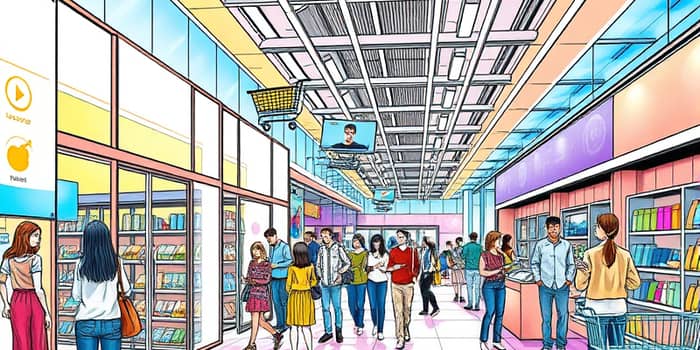
The retail industry is navigating a profound transformation as consumers increasingly embrace digital channels. Physical stores, once the heart of commerce, are evolving to meet modern demands and expectations.
This article explores the data, trends, and strategies behind this seismic shift, offering inspiration and actionable insights for retailers and stakeholders to thrive in a rapidly changing landscape.
In 2025, U.S. brick-and-mortar locations still accounted for 83.7% of total retail sales—approximately $5.28 trillion—while ecommerce captured 15.2% (about $1.48 trillion). Globally, in-store sales are projected at $24.9 trillion, growing 3.63% year over year.
Pre-pandemic, online purchases represented roughly 11% of retail; by 2025, that figure climbed to 15.4%. Meanwhile, the U.S. lost 60,000 retail stores from 2011 to 2021, a 12% per capita decline, with tech hubs like San Jose seeing a 23.6% drop in storefronts.
Consumers crave choice. Today, 43% prefer shopping online, drawn by convenience and broader selection, while the majority still value the tangible experiences of physical locations. A stunning 91% of shoppers favor brands offering seamless online and offline experiences, yet only 56% of retailers deliver on this promise.
Mobile devices dominate in-store behavior: 72% of shoppers use smartphones for price comparisons and product research, demonstrating how digital tools now enhance physical visits rather than replace them.
The COVID-19 crisis acted as a catalyst, pushing consumers toward digital alternatives almost overnight. Buy Online, Pick Up In-Store (BOPIS) and curbside pickup skyrocketed in popularity, bridging the gap between channels.
Today, over 67% of shoppers expect two-day shipping as a baseline. Retail giants like Walmart and Target have doubled down on omnichannel capabilities, proving that fast-tracked adoption of digital channels can safeguard revenue and customer loyalty.
Omnichannel fulfillment offers a 6.9% uplift in sales through the “halo effect,” where cross-channel interactions fuel additional purchases. Brands that synchronize inventory, pricing, and promotions across platforms see higher conversion rates and greater consumer satisfaction.
Additionally, click-and-collect services and same-day delivery are no longer luxuries but essentials for meeting modern shopper expectations. In 2024, 126 million Americans still visited physical stores during Thanksgiving week, underscoring the enduring power of in-person events when paired with digital touchpoints.
Retailers are investing in AI-driven technologies to bring ecommerce-style intelligence into brick-and-mortar spaces. Computer vision tracks in-store engagement, optimizing layouts and promotions to mirror successful online personalization.
Stores are transforming into powerful in-store experiential engagement hubs, with pop-up events, interactive displays, and workshops that foster community and brand affinity. Integrated sensors and mobile apps guide shoppers through curated journeys, capitalizing on AI-driven real-time analytics to anticipate needs.
Retail closures are not uniform. Tech-centric cities like San Francisco and Seattle have seen declines nearing 20–23%, while many Southern regions—such as Memphis and Oklahoma City—suffered store losses under 8%.
Localized strategies that respect demographic preferences and infrastructural realities can bolster resilience. In areas where storefronts remain vital community hubs, experiential retail and localized marketing deliver strong returns.
To thrive amid these shifts, retailers must adopt a customer-centric mindset and reimagine their footprints:
By focusing on these areas, retailers can transform challenges into opportunities, delighting customers and driving sustainable growth.
The boundary between online and offline will continue to fade, creating a retail ecosystem where convenience, experience, and personalization converge. Physical stores will serve as brand showcases and fulfillment centers, while digital platforms offer unparalleled access and efficiency.
Ultimately, the success of tomorrow’s retail landscape hinges on flexibility, innovation, and a deep understanding of evolving consumer expectations. This shift is transforming the brick-and-mortar landscape into a dynamic, hybrid frontier filled with possibility.
References













